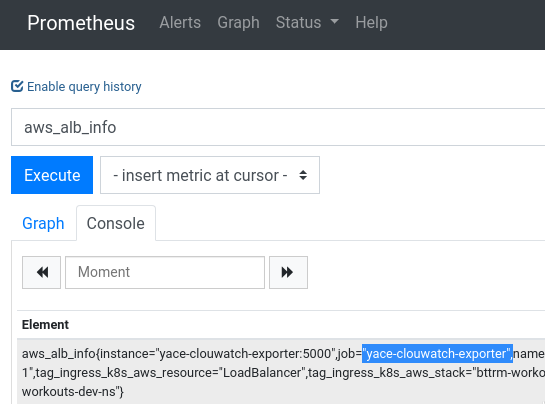
- CLOUDWATCH PROMETHEUS EXPORTER HOW TO
- CLOUDWATCH PROMETHEUS EXPORTER FULL
- CLOUDWATCH PROMETHEUS EXPORTER SOFTWARE
- CLOUDWATCH PROMETHEUS EXPORTER CODE
If you’re NOT interested in using Prometheus to collect your Lambda metrics, check out these directions for sending your metrics straight from CloudWatch to Logz.io with the otel/opentelemetry-collector. And then if you’d like to try it, you can follow along to forward those metrics to Logz.io’s Prometheus-as-a-service for scalable storage and analysis. In this section, let’s pull Lambda metrics from CloudWatch with Prometheus. Collecting and Analyzing Metrics with Prometheus and Logz.ioīefore we get to set up the monitoring dashboards, we’ll need to get the metric data into our monitoring solutions.
CLOUDWATCH PROMETHEUS EXPORTER HOW TO
We will also show how to correlate your metrics with the associated logs on Logz.io. Once we identify problems in metrics monitoring dashboards, we’ll also need log data to troubleshoot the problems.
CLOUDWATCH PROMETHEUS EXPORTER FULL
We’ll do these things with Prometheus and Logz.io.īut metrics don’t show the full picture of what’s happening with your lambdas. To put the metrics described above into action, we’ll need to collect the metric data and build dashboards to monitor them.

Collecting and Monitoring Lambda Metrics with Prometheus and Logz.io Let’s check out how we can use Prometheus and Logz.io to collect metrics at scale so they can be searched and analyzed. While Lambda metrics are automatically published to Cloudwatch, most engineering teams prefer other solutions to collect and analyze their metrics. Now that we know which metrics to monitor, let’s set up some dashboards to monitor them.
CLOUDWATCH PROMETHEUS EXPORTER CODE

As one of the workarounds, you can use CloudWatch exporter and export metrics from CloudWatch to a Prometheus instance. For example, currently, CloudWatch does not support Kubernetes metrics ( Issue link here). Prometheus and CloudWatch are very different in the problem they solve and a 1-1 comparison seems unfair but as you start moving to cloud-native stack, Prometheus starts popping up in conversations and for many right reasons. This post will try to explore various aspects and pros and cons of both options individually and as a combination. When an organization earlier using VMs in AWS decides to move to Kubernetes (Either EKS or self-managed in AWS), one of the questions that come up is should one continue to use CloudWatch or switch to some other tool like Prometheus? While it is not an exactly apple to apple comparison, there are reasons to explore this and choose tooling that is built for the future.
CLOUDWATCH PROMETHEUS EXPORTER SOFTWARE
Many companies are moving to Kubernetes as the platform of choice for running software workloads.


 0 kommentar(er)
0 kommentar(er)
